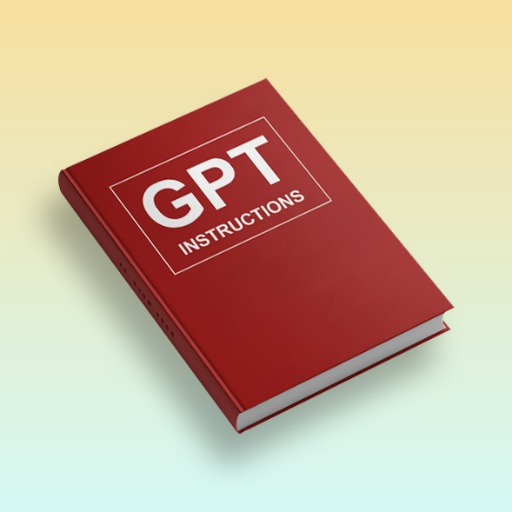ComposeGPT-Jetpack Compose assistance
AI-powered Jetpack Compose helper
How to use navigation in Compose?
How to handle state in Compose?
Show me an example of animation in Jetpack Compose
How theming works in Compose?
Related Tools
Load More
GPT Instruction Genius
[V4] Crafts detailed instructions from your ideas, to create GPTs that provide structured and consistent outputs. Tip: Write '/changelog' to see the latest changes!

Create a GPT
Assists in GPT model creation

GPT Builder Builder
Your guide to creative GPT building.

Inception GPT | Custom GPT Maker | Custom GPT
I create prompts so you can build your own custom GPT AI chat tool with advanced machine learning and self improving models. Your Custom GPT Maker is the ultimate inception tool to make your own custom GPT for any AI powered business. Your Chat GPT AI gam

Instruction Creator
Custom GPT instruction creation guide. Copyright (C) 2024, Sourceduty - All Rights Reserved.

GPT Action Creator
This GPT helps create Action Schemas which other GPTs can use.
20.0 / 5 (200 votes)
Introduction to ComposeGPT
ComposeGPT is a specialized version of ChatGPT designed to assist users with Jetpack Compose, Google's modern toolkit for building native Android UIs. ComposeGPT's primary function is to bridge the gap between traditional Android development using XML and the newer, declarative approach of Jetpack Compose. This involves providing guidance on converting XML layouts to Compose code, explaining Compose concepts, troubleshooting issues, and offering optimization tips. By understanding the fundamentals of both XML-based and Compose-based Android development, ComposeGPT can cater to developers transitioning to this new paradigm. For example, if a user is struggling with converting a complex XML layout to Compose, ComposeGPT can provide a step-by-step conversion guide, including code snippets and explanations of how Compose handles certain UI elements differently than XML.

Main Functions of ComposeGPT
XML to Compose Conversion
Example
A user has an XML layout file for a login screen and wants to convert it to Jetpack Compose. ComposeGPT guides the user through the conversion, showing how to translate XML elements like EditText and Button to their Compose equivalents (TextField and Button) and explaining how to handle state and layout arrangement.
Scenario
A developer working on updating an existing Android app to use Jetpack Compose instead of XML-based layouts.
Troubleshooting and Debugging
Example
A user encounters an issue where a Compose TextField is not updating correctly. ComposeGPT helps identify common pitfalls, such as incorrect state handling, and provides detailed instructions on how to resolve the issue by ensuring the state is properly managed with remember and mutableStateOf.
Scenario
A developer debugging a feature in a Jetpack Compose application where UI elements are not behaving as expected.
Optimizing Compose Applications
Example
A user wants to improve the performance of their Compose application. ComposeGPT suggests best practices such as using LazyColumn for large lists, minimizing recompositions by using keys correctly, and profiling the app with Android Studio's tools to identify bottlenecks.
Scenario
A developer aiming to enhance the performance of a Compose-based Android app, ensuring smooth and efficient user experiences.
Ideal Users of ComposeGPT
Experienced Android Developers
These users are proficient in traditional Android development using XML and are looking to adopt Jetpack Compose. They benefit from ComposeGPT by getting detailed guidance on migrating their skills and existing projects to the new framework, ensuring a smooth transition.
Beginner Android Developers
Newcomers to Android development who choose to start directly with Jetpack Compose. ComposeGPT helps them by providing clear explanations of Compose concepts, examples, and troubleshooting tips, making it easier to learn and apply Compose without the need for extensive prior knowledge of XML.

How to Use ComposeGPT
Visit aichatonline.org
For a free trial without login, and no need for ChatGPT Plus.
Familiarize Yourself with Features
Explore the interface and features available for your needs.
Start Asking Questions
Pose your queries about Jetpack Compose and related topics to receive detailed responses.
Utilize Provided Resources
Refer to links and resources, such as composables.com, for full code samples and further reading.
Optimize Your Queries
For the best experience, be specific and detailed in your questions to get comprehensive and varied answers.
Try other advanced and practical GPTs
GPT Finder
Discover AI-Powered GPT Models Effortlessly

Dungeon Maestro
AI-Powered Dungeon Master for D&D 5e
Better Sheets
Master Google Sheets with AI-Powered Guidance

Fun Mode
AI-driven humor, insights, and creativity.

Daily Tarot
Unveil Your Path with AI-Powered Tarot.
Ayla - Your mental health buddy
AI-powered mental health support for thought reframing

Story Studio | OpenStory Plus
AI-Powered Screenplay and Story Writing

GPT Builder Builder
AI-Powered Custom GPTs for Everyone

NEWS Summarizer
AI-Driven News Summaries at Your Fingertips

Sakura Translator
AI-powered English-Japanese Translation Tool

Choose your own quest!
AI-Powered Adventures for All Ages

WealthSystems
AI-Powered Financial Insights at Your Fingertips
- Optimization
- Learning
- Troubleshooting
- Development
- Conversion
ComposeGPT Q&A
What is ComposeGPT?
ComposeGPT is an AI tool designed to assist with questions and tasks related to Jetpack Compose, offering guidance on converting XML to Compose syntax, troubleshooting issues, and implementing features.
How can I convert Android view XML code to Jetpack Compose syntax?
Provide the XML code, and ComposeGPT will translate it into the corresponding Jetpack Compose syntax, explaining each step for clarity.
What are common use cases for ComposeGPT?
Common use cases include learning Jetpack Compose, converting legacy XML layouts, optimizing Compose applications, and troubleshooting development issues.
What resources does ComposeGPT recommend?
ComposeGPT frequently references resources like composables.com for full code samples, tutorials, and tools to aid in Jetpack Compose development.
How does ComposeGPT help with Jetpack Compose troubleshooting?
ComposeGPT analyzes provided code snippets, identifies potential issues, and offers detailed solutions to resolve them, enhancing development efficiency.